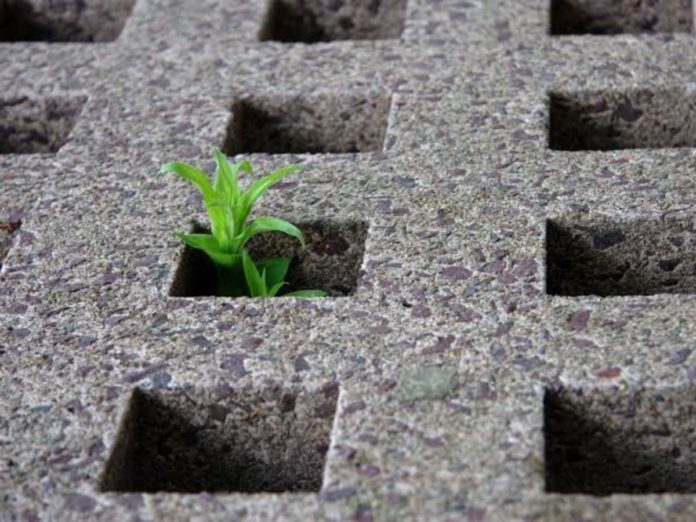Concrete is a simple and elegant material. You mix certain stuff, add water, and let it set. It is one of the most basic pillars of modern society. It carries the weight of our development on its shoulders, literally and figuratively. Concrete is sand mixed in with certain binders that go through a reaction when exposed to water and form the hard substance. It stays fixed and rigid for a long time.
Researchers at the University of Colorado, Boulder have created a very different kind of concrete. Their aim was simple. To create concrete that could one day help reduce the environmental impact of the construction industry. The team has used a type of bacteria, Synechoccus, to create building blocks in a variety of different shapes. The term “living” refers to how the material is formed rather than describing its characteristics.

Part of the strength of concrete comes to form due to the carbonates that are formed during the curing process. A lot of living things produce the same chemicals and even make specific structures out of them. One example is the shell of aquatic animals where the bacteria secrete carbonates that form really hard crystals.
The topic has been researched for quite a while now. The idea of structural concrete that involves biological processes is not new. The focus of these studies has been on how different aquatic animals form their shells and how they get their impressive properties. Several other studies are going on in labs around the world that aim to utilize the knowledge gained from studying these aquatic animals for creating self-healing concrete. The biggest impediment in building such materials has been the setting of the concrete part. During this reaction, a lot of heat is released, and the acidity is low, which is bad for living creatures.

In the study, researchers used sand as the fill, and the bacteria were introduced for producing the binding material, which is the carbonates. The problem with simply putting the bacteria in the sand was that the formation of carbonates is a very slow process. While it is happening, nothing is holding the material together. To solve this problem, researchers brought in gelatine, a soft jelly-like substance that could hold the material together.
What the researchers found that the gelatine was a really good choice for this experiment. As long as the researchers kept the humidity at certain levels, the gelatine absorbed the right amount of water to support bacterial life. Carefully controlling the temperature also leads to the bacteria living longer.
The researchers even went ahead and pulled some of the bacteria out from the first culture and started another culture with it. They were able to do this for three generations and suspect that this is an infinite chain.
Further Reading:


